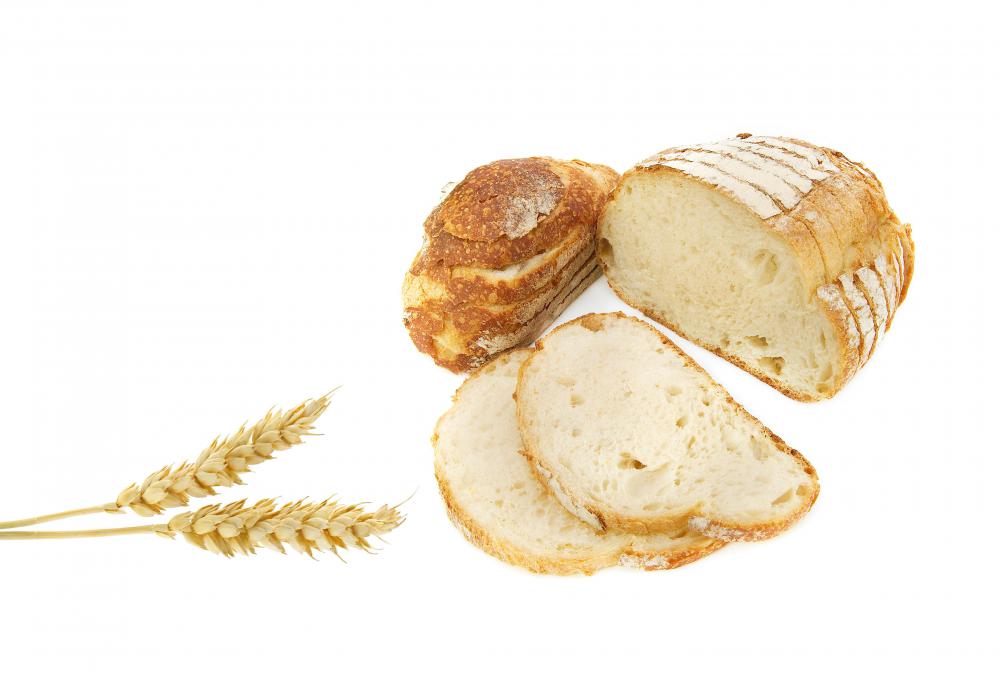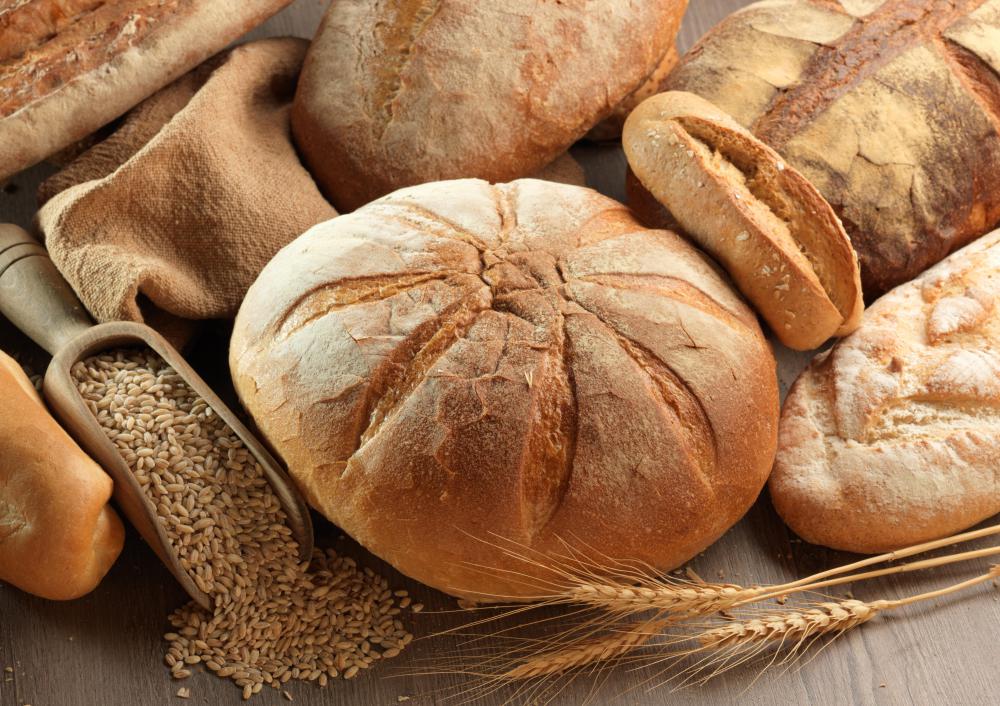At WiseGEEK, we're committed to delivering accurate, trustworthy information. Our expert-authored content is rigorously fact-checked and sourced from credible authorities. Discover how we uphold the highest standards in providing you with reliable knowledge.
What is Italian Country Bread?
Italian country bread is a type of traditional Italian bread which is known for its very chewy, coarse texture. The texture of this bread makes it ideal for dipping and sandwich making, because it holds moisture very well without becoming soggy. This bread is also referred to as pan bigio, or “gray bread,” in a reference to the unrefined flour which is traditionally used to make it. Many Italian bakeries offer this bread, and it can also be made at home.
By tradition, pan bigio is made from minimally processed flour. Typically, this means that the flour is whole wheat, lending a very rich, nutty flavor to the finished bread. Some bakers prefer to use a mixture of lightly processed white flour and whole wheat flour so that the bread is not as heavy, creating a bread with a flecked texture and a slightly more open crumb. Cornmeal may be added as well to make the texture even more coarse.

Italian country bread is made with a biga, a traditional Italian starter which pulls wild yeasts from the air. Breads made with bigas tend to be chewier and they have more complex, savory flavors as a result of the slow fermentation of the wild yeasts involved. Making pan bigio with dried yeast is not recommended, as the bread will tend to have a bland, lackluster flavor which will not be very enjoyable, and the texture will be fundamentally different.

A good loaf of Italian country bread has a thick, chewy crust, a medium crumb, and a chewy texture. The dough includes salt, water, and oil in addition to the flours discussed above, and it is traditionally very wet and sticky. This can make the dough very hard to handle, but it produces a chewier bread; bakers tend to flour their hands heavily when working with the dough to prevent it from sticking.

The flavor of Italian country bread is savory with an earthy note; the strength of the earthy note varies, depending on how much whole wheat flour is used. In the event that the bread is made in a traditional brick oven, the bread will have a thick bottom crust and a slightly smoky flavor; the conditions of a brick oven can be mimicked with a bread cloche and a baking stone, for those who do not have access to a brick oven.
AS FEATURED ON:
AS FEATURED ON:















Discussion Comments
@firstviolin -- Hi -- I don't know what kinds of recipes you've been looking at, but a biga is not that hard to make. It just takes a little time. Here's my Italian biga recipe, for what it's worth.
OK, you start out by making your biga. Here's what you'll need:
3/4 teaspoon active dry yeast
1/2 cup warm water
3 1/2 cups unbleached bread flour
1 1/4 cups cold water
Place the warm water in a bowl, and then sprinkle the yeast on top. You don't need to stir it, just let it stand for a while (like 15 min) until it gets foamy.
Then put your flour into a large bowl, and make a little dip in the middle. Pour in the yeasty water with the cold water, and then mix it together with a spoon (I prefer a wooden one) until it gets too difficult to stir. It should be well-mixed and sticky.
Cover and let it ferment in your fridge for at least 24 hours. You'll be able to use this biga for up to two weeks afterwards.
Now you're ready to make the actual bread. Using a biga instead of yeast will give your bread a much more flavorful taste, almost "beery" in nature, or kind of like sourdough.
And be sure to use Italian olive oil for dipping too -- you just can't compromise if you really want to get the best flavor here!
Best of luck, feel free to message me back in the comments if you have any questions.
Namaste!
Is it possible to make Italian country bread with regular baking yeast rather than biga? I really want to try making this kind of bread, since I like all kinds of country, peasanty breads, but every recipe that I find seems to only use biga -- which just sounds hard to make, frankly.
So is there any way to get the same result with regular baking yeast? Or can someone give me an easy way to make biga, or a starter dough? All the recipes that I find when I search for Italian food online just seem a little too labor intensive for me, so I'm hoping that somebody here can help me out!
Thanks in advance for your input and recipes!
Oh, I love this stuff! I really wasn't very much a fan of Italian food until somebody gave me an Italian food gift basket a few years back, and since then, I've been a total addict.
If pasta and olive oil are the backbones of traditional Italian food, then I have to say that Italian country bread is one of the legs -- or some equally important bone. Metaphors aside, Italian country bread really is fantastic for all kinds of dishes, and not only those on Italian menus.
For instance, Italian country bread goes with almost any kind of soup, and it also works well for sandwiches, since it's really dense and chewy.
And of course, you can't go wrong dipping Italian country bread in a good extra virgin olive oil. Although Italian extra virgin olive oil is of course the best, really any good one will still give you a great taste -- that's how versatile this lovely bread is!
So if you have never tried it before, you really have to -- it's one of those things that you have to do before you die. Just make sure you get a good, traditional bread -- not some pseudo Italian style instant bread. It really does make a difference.
Post your comments